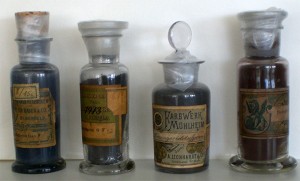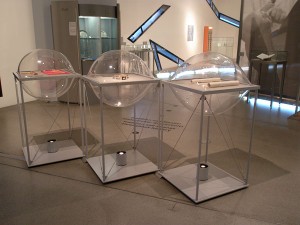A museum has a thousand objects in its possession, but sometimes just the right one is missing! Last winter when I was preparinga new showcase in the permanent exhibition on the Nobel Prize winner Paul Ehrlich, I didn’t have enough pieces to create a coherent presentation for the exhibit.
I wanted to illustrate Paul Ehrlich’s achievement in the field of medicine with documents and paraphernalia from his work, but didn’t find any appropriate objects in our collection. Nonetheless this significant scientist was to appear in our exhibition. He developed a cure for syphilis, founded modern cancer research, and brought many important, trendsetting research results to light.

Jars of dye that Paul Ehrlich needed for his famous experiments with dye, Paul Ehrlich Institute, Langen
© photo: Christiane Bauer, Jewish Museum Berlin
So I began to search for suitable exhibit pieces and found my way to Hessen: both the Paul Ehrlich Institute in Langen and the Georg Speyer House in Frankfurt – Paul Ehrlich’s last and most significant workplace – have an impressive store of items related to his work and influence. But how to bring these objects to the museum in Berlin? → continue reading
